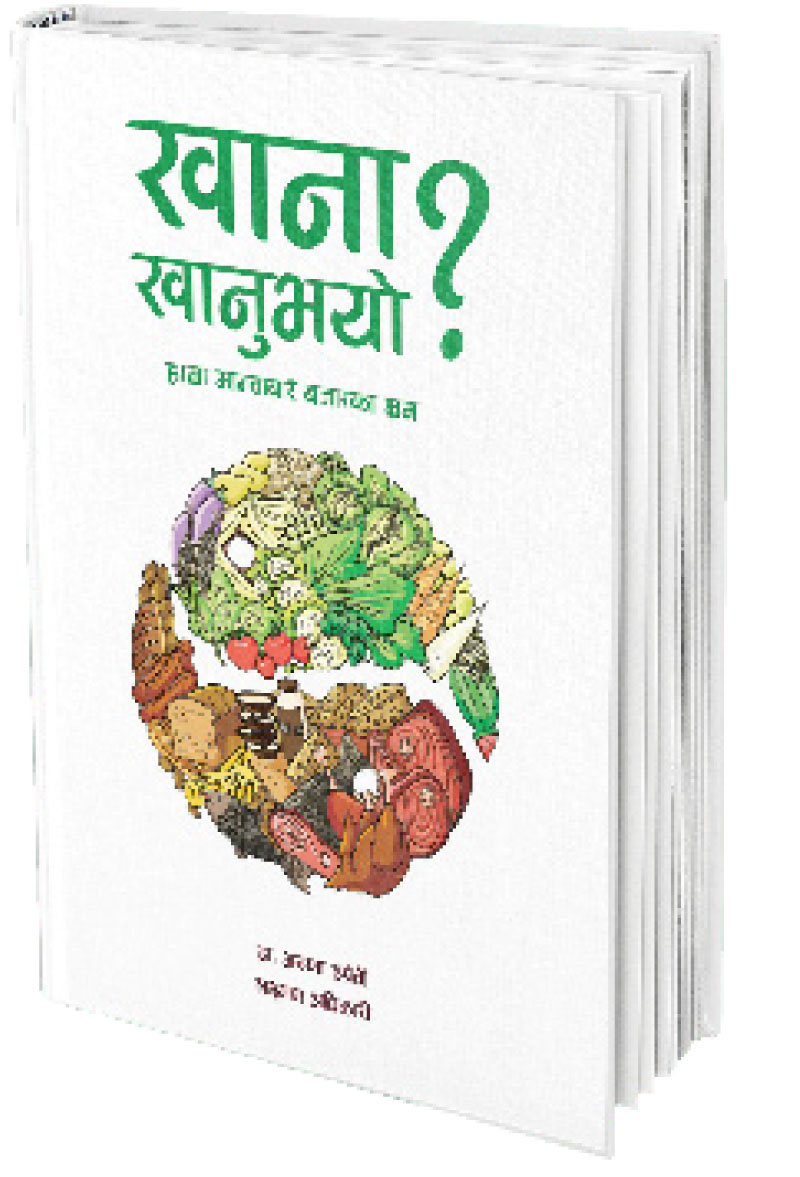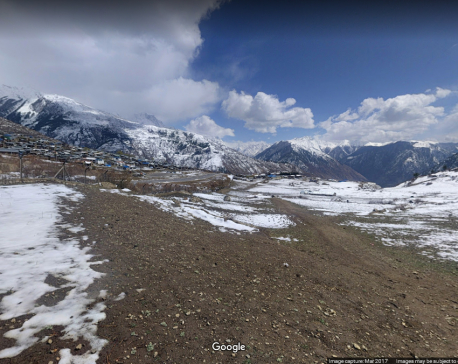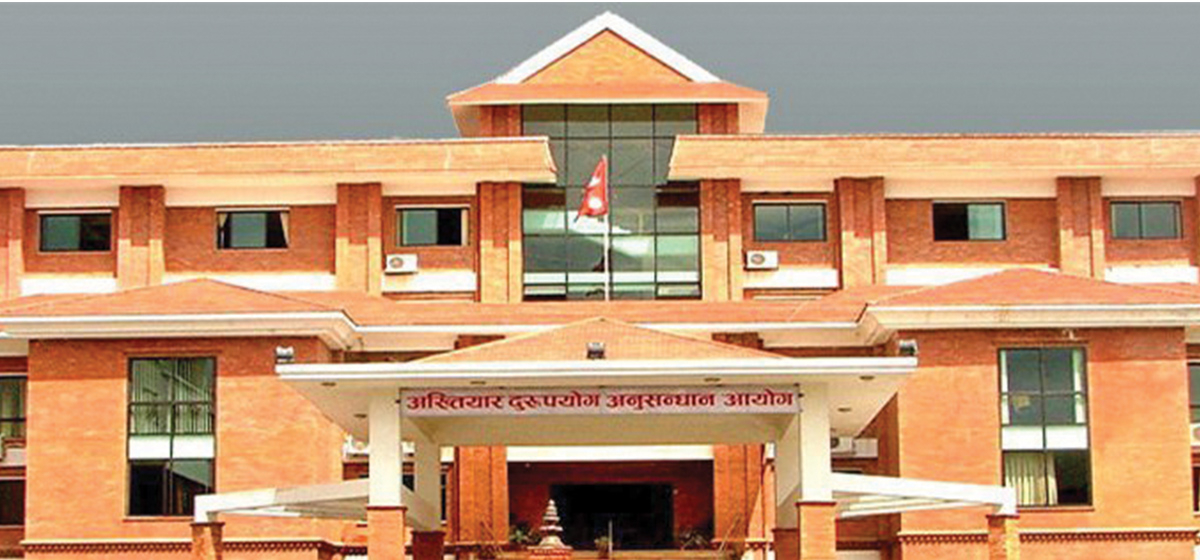
OR
Marching towards healthier food habits
Published On: July 7, 2017 09:40 AM NPT By: Republica | @RepublicaNepal

“Turns out people take the information you are trying to convey a lot more
seriously if it is written in a book,” she says, sounding rather amused.
“But if that is what it takes, so be it,” she adds.
Dr Aruna Uprety shares why it’s become necessary to inform Nepalis of nutrition. “This book is for all those who eat,” she says. As far as the intention of her new release is concerned, Dr Uprety thinks it’s that clear and simple.
After decades of actively voicing her opinions on matters of health via numerous articles, ‘Khana Khanu Bhayo? Hamra Bhansa Bare Bazaar Ka Bhram’, is her attempt to put forth a stronger case. She wants nutrition to be one of Nepalis’ main priorities but, as a side note, she also mentions a rather interesting pattern she experienced on her extensive travel and interactions with people throughout the country.
“Turns out people take the information you are trying to convey a lot more seriously if it is written in a book,” she says, sounding rather amused. “But if that is what it takes, so be it,” she adds.
She is well aware that we are certainly not short of people who urge us to eat healthier or warn us against the effects of junk food and cold drinks. Where her efforts differ is the collection of real life experiences that she brings in the book.
To Dr Uprety, the increasing influence that the fancy ads have had on Nepali consumers and its steady effect on our eating habits as well as health is too apparent. Though, exasperatingly enough, the masses haven’t quiet caught on yet.
Dr Uprety shares examples of the sort of cases that she mentions in her book. There is a story of a woman social worker in Dailekh who was insisting on feeding her toddler Lactogen milk despite the fact she had a buffalo at home. Despite her child suffering from diarrhea, she was falsely assuming that the ‘branded’ milk had more nutrition.
Similarly, there are cases of mothers in Accham selling eggs to buy their kids a packet of noodles for their afternoon tiffin. Even stories of adult patients insisting that their doctors to prescribe them all kinds of extra supplement medicines because they had heard it was necessary make it to the book.
“This is all a result of false advertisement and hype in the media and society. If it comes in packets, has English words on them, and is also consumed by westerners, too many Nepalis feel it is a must for them too. It’s a successful case of mass brainwash,” says Dr Uprety.
And one must admit, these mentioned notions on food do strike a chord. Apparently, this is one of the agendas of the book. Dr Uprety assures that there are more of these anecdotes in the book. In an effort to make these problematic modern takes on food more relatable, each chapter has case studies or discussions with doctors and other experts.
So if this is the hook that starts the book, where the doctor insists she is trying to lead her potential readers is back to our home kitchen and local produce.
As she puts it, “I’m a healthy 58-year-old but I have never had a single multivitamin tablet in my life. Honestly, the marketing strategy of pharmaceutical companies has been amazing. You don’t need extra of anything. It’s all there in our food, if we eat it right.”
Dr Uprety shares that our Ministry of Agricultural Development has even meticulously recorded the various nutrition factor of produces that are grown in our country. They have been researched and indexed in a very efficient way. She apparently always considered it a big shame that the information wasn’t being disseminated among the public but Khana Khanu Bhayo? turned out to be one great opportunity to utilize the research.
The meticulously illustrated nutrition tables are dedicated to those who have trouble believing that the home food that we can cook and consume will be enough to provide us (including those 50 years and above) all the necessary nutrients required to live a fit and healthy life.
The solid, science based information aside though, Dr Uprety also talks about the memory of her grandmother being a constant fixture while writing this book.
“I always considered her as being a bit of a nag but now I really value the knowledge that she, perhaps, unwittingly passed down to me,” she says. All the kodo recipes, turmeric for its antiseptic powers, curd for diarrhea, neem for scabies, lattai for anemia, the super food, flaxseed for omega 3 and so on it goes. In essence, these are food trivia that most Nepalis from the older generations were well aware of. But as we can tell, this knowledge today is slowly disappearing. Dr Uprety through her book is trying to reestablish this faith and liking in and for our home-grown and home-cooked food.
In her experience, it’s just that many Nepalis aren’t aware of the extent that our current habits can affect our future health. Most know that junk food isn’t good, but there is still a need to explain why. Dr Uprety lists unawareness as one of the major factors that is stopping Nepalis from turning to home-cooked meals. And she doesn’t underestimate the taste and the social quo factor either.
“When you are traveling to rural places, locals there refuse to serve kodo or phaapar items. They consider it as not being worthy and opt for white rice instead. This wrong attitude towards our food has set in really deep,” she shares.
So she wonders how nice it would be if NGO workers, political leaders or even local tourists choose to change the perception during their visits, become a role model and specifically order those dishes. How nice would it be if more restaurants, food related enterprises, and media outlets began to support the cause.
Still, let’s be honest, changing our eating habit will take a conscious decision on our part. But, if in case, you were looking for more concrete reasons to convert, Khana Khanu Bhayo? is now available in the market.
You May Like This

Biplav Maoists halt food supplies, Humla, Mugu under food shortage
HUMLA, Jan 21: For the past 10 days, the Biplav led Maoist faction have seized daily food supplies and 300... Read More...

Lawmakers draw attention towards acute paucity of food in Karnali
KATHMANDU, June 21: The lawmakers have condemned the terrorist attack in Kabul, the Afghan capital, and appealed for treatment of... Read More...

Locals face food crisis as rice rots at NFC godown
BAJHANG, SEPT 17: As many as 18 VDCs adjoining Chainpur, the district headquarters, are suffering from scarcity of food items while... Read More...



Just In
- Birgunj Metropolis collects over Rs 360 million in revenue
- NEPSE plunges below 2,000 points after one and a half months; daily turnover declines to Rs 2.10 billion
- AI Index Report-2024: AI still behind humans on complex tasks like competition-level mathematics
- Daiji-Jogbudha road construction at snail’s pace
- Govt fails to adopt podway technology despite its potential in Nepal
- Jhulaghat border crossing in Baitadi to remain closed from this evening
- Universities will be free from partisan interests: Education Minister
- CIAA files cases against five, including ex-chief of Social Development Office Dolpa
















Leave A Comment